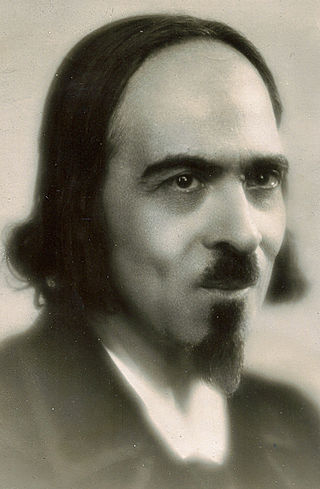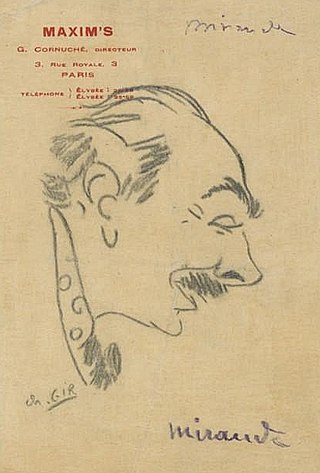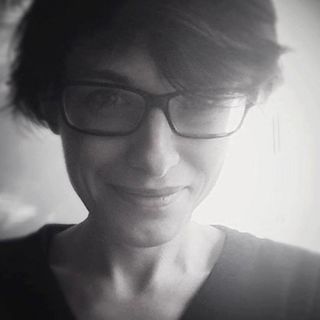
Édith Piaf was a French singer, lyricist and actress. Noted as France's national chanteuse, she was one of the country's most widely known international stars.

Valérie Kaprisky is a French actress.

Papa Beaver's Storytime is an animated television series based on the Père Castor series of children's story books produced by French publisher's editor Paul Faucher. The series which was produced by Cinar, originally aired from 1993 to 1995 and 2002 on the French channels Canal J and France 3, and later on the American channel Nickelodeon's Nick Jr. block between 1994 and 1997.

Théophile "Théo" van Rysselberghe was a Belgian neo-impressionist painter, who played a pivotal role in the European art scene at the turn of the twentieth century.
Maryse Choisy (1903–1979) was a French philosophical writer, journalist and founder of the journal Psyché.

André Suarès, born Isaac Félix Suarès was a French poet and critic.

Fatou Diome is a French-Senegalese writer known for her best-selling novel The Belly of the Atlantic, which was published in 2001. Her work explores immigrant life in France, and the relationship between France and Africa. Fatou Diome lives in Strasbourg, France.

Marie Glory was a French actress.

Lââm is a French singer of Tunisian descent. She has sold more than 4,000,000 singles & albums.

Marie Dubois was a Parisian-born French actress.

Ginette Leclerc was a French film actress. She appeared in nearly 90 films between 1932 and 1978. Her last TV appearance was in 1981. She was born in Ile-de-France, France and died in Paris. She was married to the actor Lucien Gallas. She is possibly best-remembered for her roles in such films as Le Corbeau (1943), The Baker's Wife (1938), Cab Number 13 (1948), and Tropic of Cancer (1970).

Yves Mirande was a French screenwriter, director, actor, and producer.

Les Compagnons de la chanson were a French harmony vocal group, formed in 1946 from an earlier group founded in Lyon, France in 1941. Their best known song was "Les trois cloches" recorded with Edith Piaf in 1946. They were eight or nine members in the group, and they were popular in France with some success internationally, and they continued to perform until 1985.

Paul Jean François Cousturier was governor of French Guinea, 2 November 1900 to 28 September 1904. After his retirement, he became a well-known botanist.

Deborah Heissler is a contemporary French author. Her works of poetry have garnered critical acclaim and numerous awards, including the Louis Guillaume Prose Poetry Award (2012), the Yvan Goll Francophone Poetry Award (2011) and the Bleustein-Blanchet Foundation Prize (2005).

Louis de Robert was a French writer, winner of the prix Femina in 1911.

Kliclo is an artist based in Paris, France. Her works deal with traces, remains and memories, often using Yiddish.

The 8th Magritte Awards ceremony, presented by the Académie André Delvaux, honored the best films of 2017 in Belgium and took place on 3 February 2018 at the Square in the historic site of Mont des Arts, Brussels, beginning at 8:45 p.m. CET. During the ceremony, the Académie André Delvaux presented Magritte Awards in 22 categories. The ceremony was televised in Belgium by La Deux, after RTBF took over broadcast rights from BeTV. Actress Natacha Régnier presided the ceremony, while Fabrizio Rongione hosted the show for the third time.

Jeanne Amen was a French painter.
Stella Blandy was a French writer and a committed feminist. A contributor to the literary journals Revue contemporaine and Revue des deux mondes, she wrote novels and essays, and also translated English and Italian works into French. Blandy died in 1925.

















